Abstract
A n osteochondroma is a bone tumor, but rarely occurs in the thoracic spine, especially in the pediatric population. The objective of this study was to describe the diagnosis and successful treatment of a pediatric patient with an osteochondroma of the thoracic spinous process. The anteroposterior and lateral plain radiographs illustrated a well- defined solid mass arising from the spinous process of the tenth thoracic vertebrae. Computed tomography and magnetic resonance imaging further delineated that the mass arose from the spinous process, but with no obvious impingement of the nerve roots. A fter excision of the lesion, the gross pathological and histological evaluations were consistent with those of an osteochondroma. This led to appropriate surgical intervention, resulting in definitive treatment.
REFERENCES
1). Albrecht S, Crutchfield JS, SeGall GK. On spinal osteochondromas. J Neurosurg. 1992; 77:247–252.

2). Dahlin DC, Unni KK, In. Bone Tumors: General Aspects and Data on 11, 087 cases. 5th ed.Springfield, IL: Lippincott-Raven;1996. 11-25.
3). Arasil E, Ederm A, Yuceer N. Osteochondroma of the upper cervical spine: a case report. Spine. 21:1996; 516–518.
4). Cohen DM, Dahlin DC, Mac Carty CS. Apparently soli - tary tumors of the vertebral column. Mayo Clin Proc. 39:1964; 509–528.
5). Elsberg CA. Surgical Diseases of the Spinal Cord, Membrane, and Nerve Roots: Symptoms, Diagnosis, and Treatment. New York: PB Hoeber. 1941; 359-360.
6). Schmale GA, Conrad EU, Raskind WH. The natural history of hereditary multiple exostoses. J Bone J Surg. 76A:1994; 986–992.

7). Cooke SR, Cumming WJK, Cowie RA. Osteochondroma of the cervical spine: case report and review of the literature. Br J Neurosurg. 8:1994; 359–363.

8). Di Lorenzo N, Nardi P, Ciappetta P, Fortuna A. Benign tumors and tumorlike conditions of the spine. Surg Neurol. 25:1986; 449–456.
9). Bullough PG. Orthopedic Pathology. 3rd ed.London;p. Mosby–Wolfe. 354-356:1997.
10). Kenny PJ, Gilula LA, Murphy WA. The use of computed tomography to distinguish osteochondroma from chon -drosarcoma. Radiology. 139:1981; 129–137.
11). Malat I, Virapongse C, Levine A. Solitary osteochondroma of the spine. Spine. 11:1986; 625–628.

12). Mirra JM, Picci P, Gold RH. Bone Tumors: Clinical, Radiologic, and Pathologic Correlations. Philadelphia: Lea & Febiger. 1989; 1626-1629.
13). Linkowski GD, Tsai FY, Recher L, et al. Solitary osteochondroma with spinal cord compression. Surg Neurol. 23:1985; 388–390.

14). Chiurco AA. Multiple exostoses of bone with fatal spinal cord compression. Neurology. 20:1970; 275–278.
Fig. 1.
Lateral radiography of the thoracic spine of a 5-year-old girl showing solid bony mass extending from the spinous process of the tenth thoracic vertebrae.
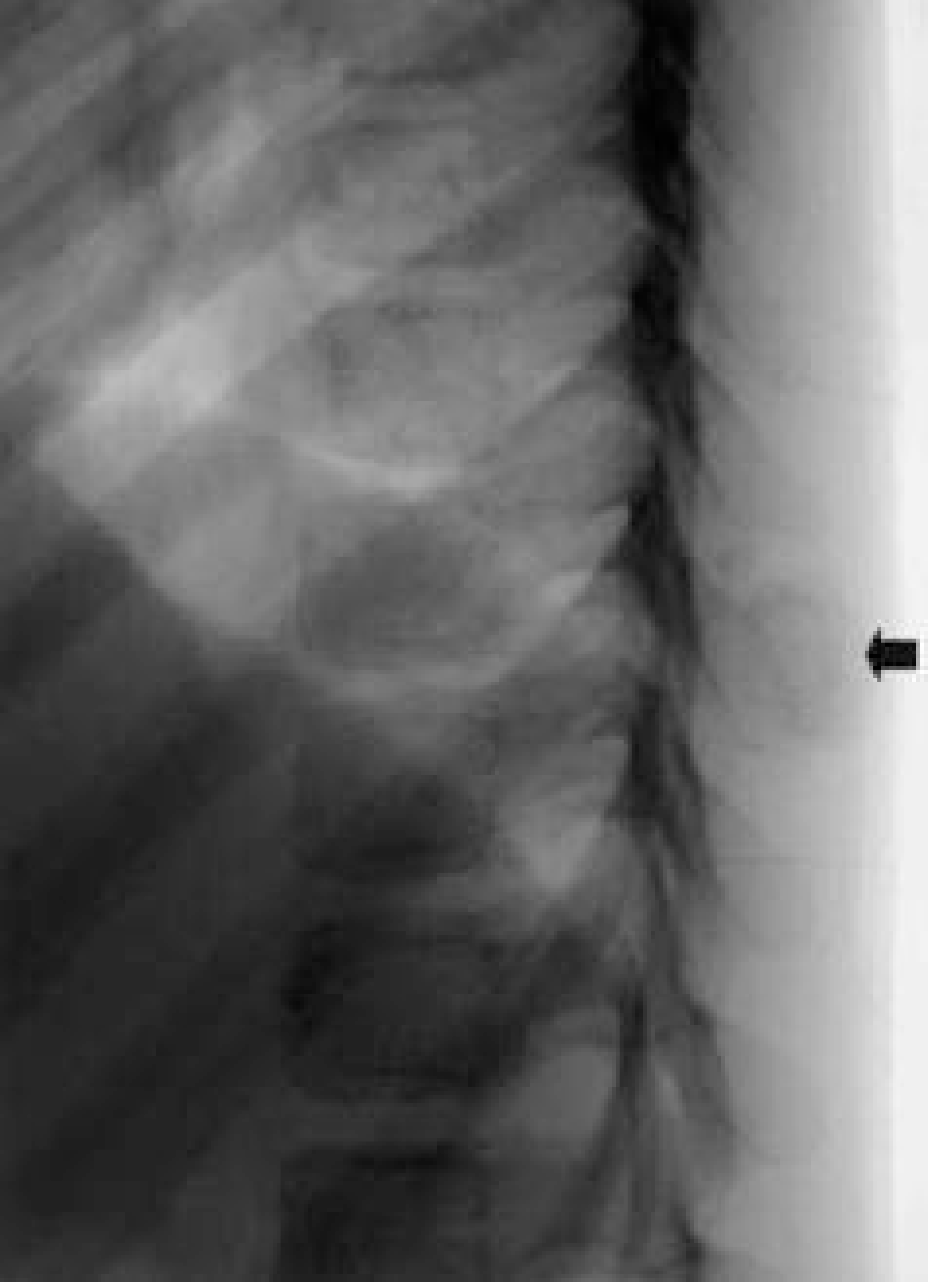
Fig. 2.
Computed tomography showing 2.0 × 1.3 × 1.8 cm sized osteochondroma protruding posteriorly from the spinous process of the tenth thoracic vertebrae.
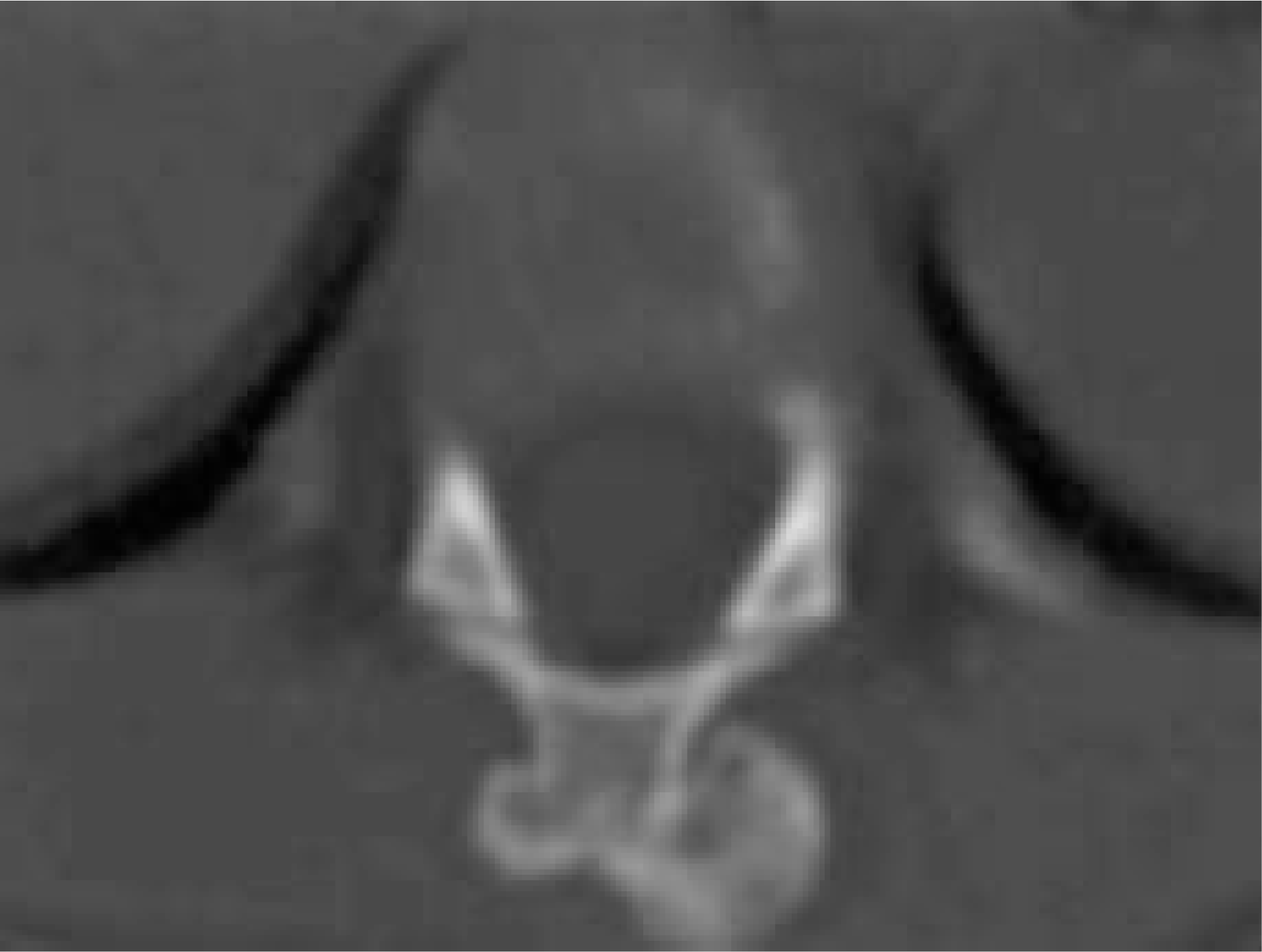
Fig. 3.
T2 weighted sagittal MRI showing the high signal intensity cartilaginous cap and bony out growth at T10 spinous process.
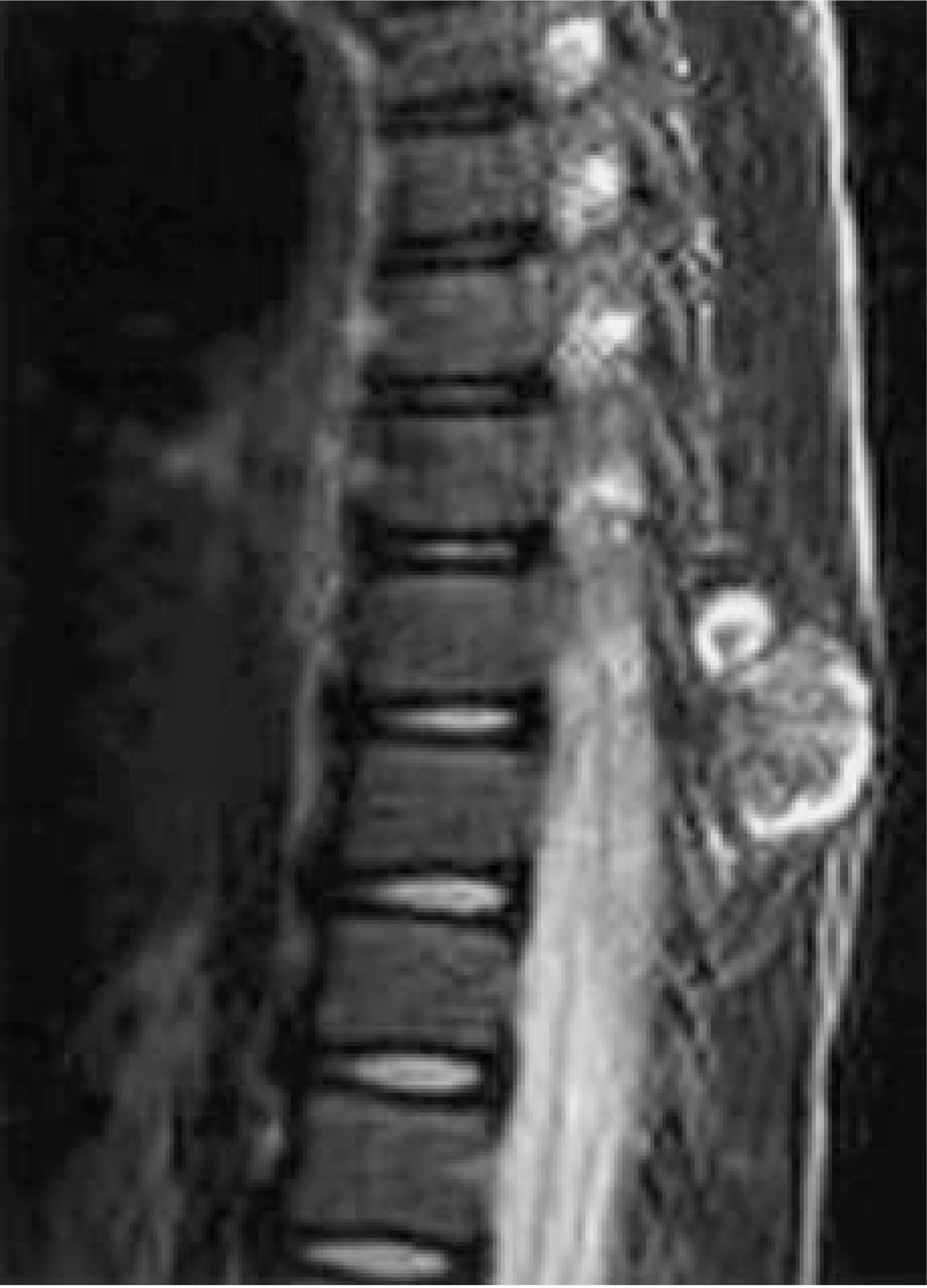




 PDF
PDF ePub
ePub Citation
Citation Print
Print


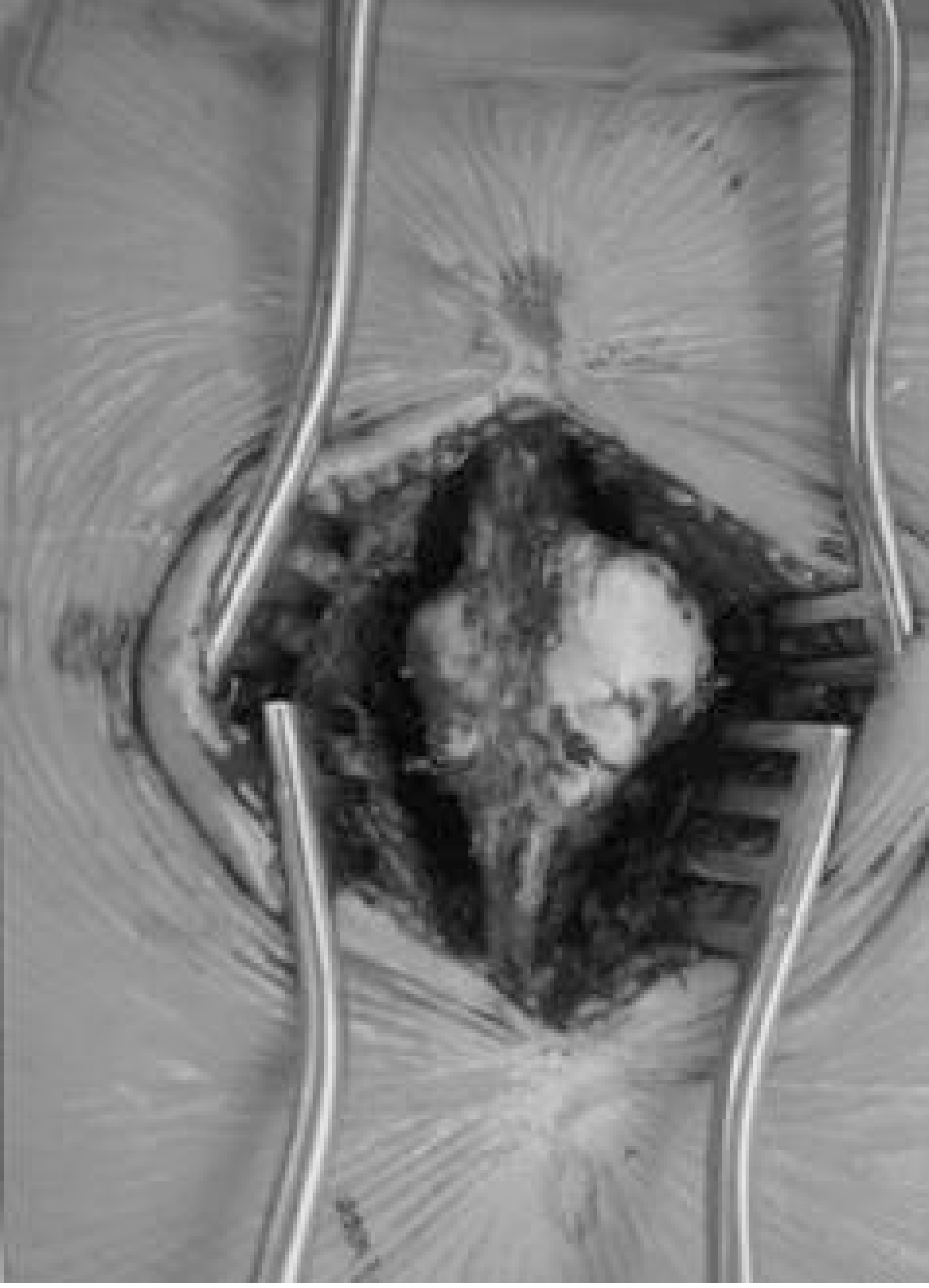
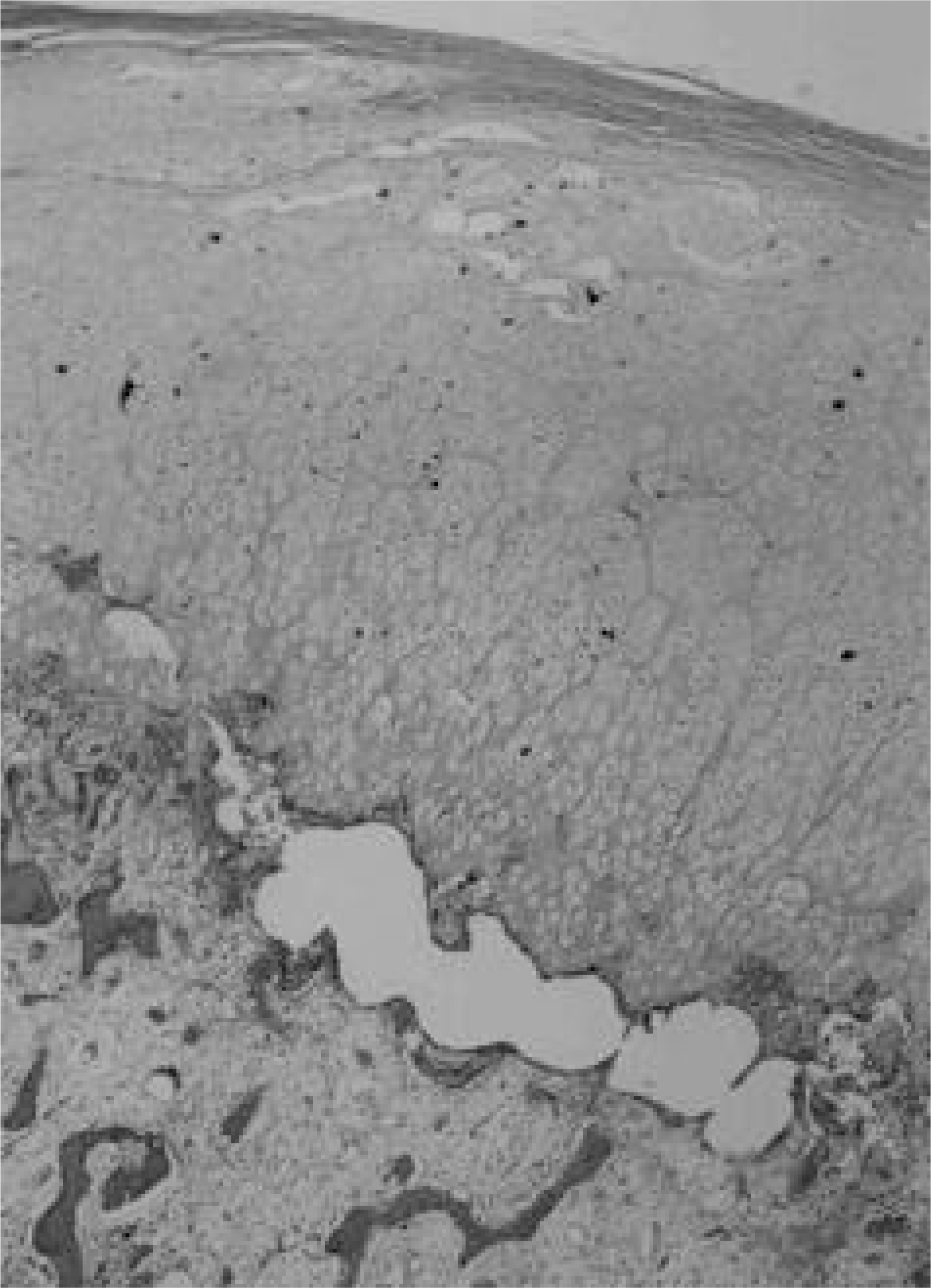
 XML Download
XML Download